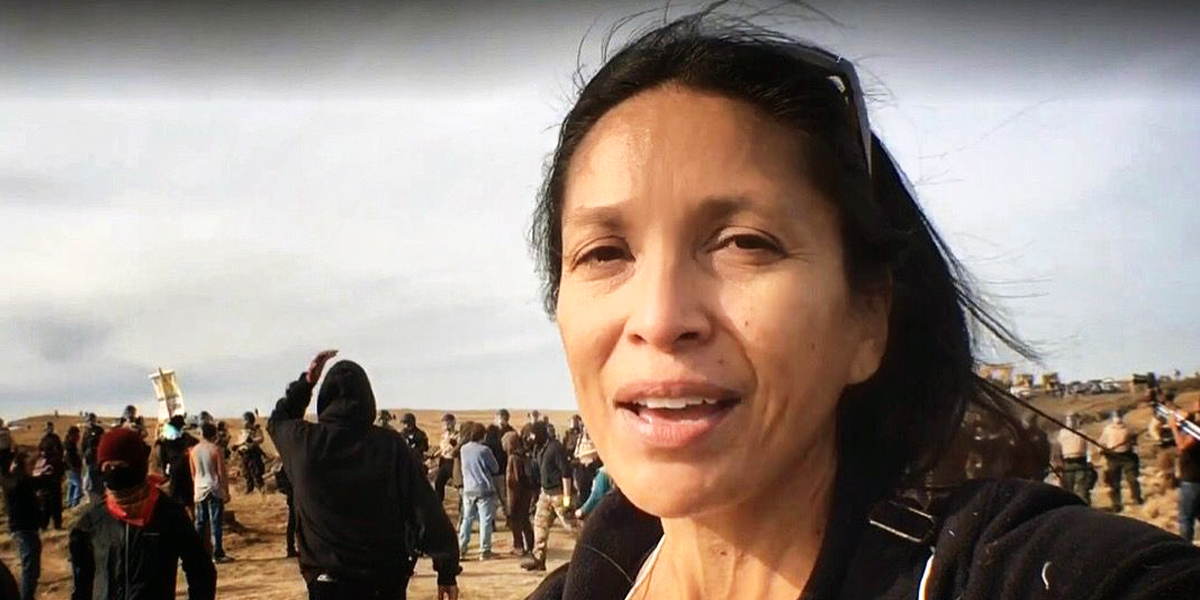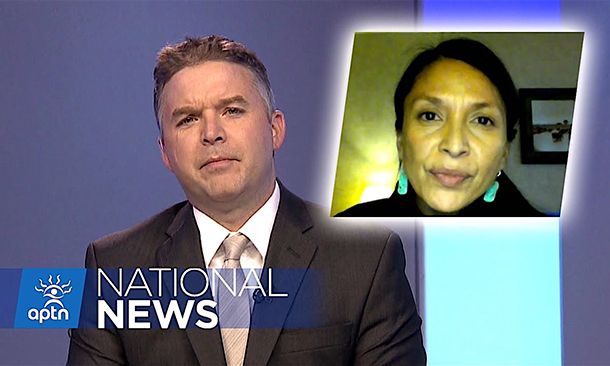
First Amendment Under Siege as Another Journalist Arrested at Standing Rock

By Mark Trahant
Jenni Monet, a Native American journalist, was arrested last week while covering Standing Rock. You’d think that would trigger a lot of support from the national and regional news media.
There is an idea in law enforcement called the “thin blue line.” It basically means that police work together. A call goes out from Morton County and, right or wrong, law enforcement from around the country provides back up.

You would think journalism would be like that, too.
When one journalist is threatened, we all are threatened. We cannot do our jobs when we worry about being injured or worse. And when a journalist is arrested? Well, everyone who claims the First Amendment as a framework should object loudly.
Last Wednesday, Monet was arrested near Cannon Ball, North Dakota. She was interviewing water protectors who were setting up a new camp near the Dakota Access Pipeline route on treaty lands of the Great Sioux Nation. Law enforcement from Morton County surrounded the camp and captured everyone within the circle. A press release from the sheriff’s Department puts it this way: “Approximately 76 members of a rogue group of protestors were arrested.” Most were charged with criminal trespassing and inciting a riot.
76 Arrested at #StandingRock as #Trump Tries to Move #DAPL Forward https://t.co/SvRGc03TDJ @IENearth @HonorTheEarth @350 @billmckibben
— EcoWatch (@EcoWatch) February 3, 2017
As was Monet. She now faces serious charges and the judicial process will go forward. The truth must come out.
But this story is about the failure of journalism institutions.
The Native press and the institutions that carry her work had Monet’s back. That includes Indian Country Media Network, YES! Magazine and the Center for Investigative Reporting’s Reveal. In Canada the Aboriginal People’s Television Network reported on the story during its evening news. And, the Los Angeles Times has now weighed as well in with its own story written by Sandy Tolan who’s done some great reporting from Standing Rock.
The Native American Journalists Association released a statement immediately:
“Yesterday’s unlawful arrest of Native journalist Jenni Monet by Morton County officers is patently illegal and a blatant betrayal of our closely held American values of free speech and a free press,” NAJA President Bryan Pollard said, “Jenni is an accomplished journalist and consummate professional who was covering a story on behalf of Indian Country Today. Unfortunately, this arrest is not unprecedented, and Morton County officials must review their officer training and department policies to ensure that officers are able and empowered to distinguish between protesters and journalists who are in pursuit of truthful reporting.”
Yet in North Dakota you would not know this arrest happened. The press is silent.
I have heard from many, many individual journalists. That’s fantastic. But what about the institutions of journalism? There should news stories in print, digital and broadcast. There should be editorials calling out North Dakota for this egregious act. If the institutions let this moment pass, every journalist covering a protest across the country will be at risk of arrest.
After her release from jail, Monet wrote for Indian Country Media Network:
“When Democracy Now!’s Amy Goodman was charged with the same allegations I now face—criminal trespassing and rioting—her message to the world embraced the First Amendment. ‘There’s a reason why journalism is explicitly protected by the U.S. Constitution,’ she said before a crowd gathered in front of the Morton County courthouse. “Because we’re supposed to be the check and balance on power.”
Arrest Warrant Issued 4 @DemocracyNow's Amy Goodman 4 Coverage of #DakotaAccessPipeline https://t.co/LXzYQLf22L @PriceofOil @DeSmogBlog @350
— EcoWatch (@EcoWatch) September 12, 2016
The funny thing is that journalism institutions were not quick to embrace Goodman either. I have talked to many journalists who see her as an “other” because she practices a different kind of journalism than they do.
Monet’s brand of journalism is rooted in facts and good reporting. She talks to everyone on all sides of the story, including the Morton County Sheriff and North Dakota’s new governor. She also has street cred … and knows how to tell a story. Just listen to her podcast and you will know that to be true.
So if we ever need journalism institutions to rally, it’s now. It’s not Jenni Monet who will be on trial. It’s the First Amendment. Journalism is not a crime.
Mark Trahant is the Charles R. Johnson Endowed Professor of Journalism at the University of North Dakota and a member of The Shoshone-Bannock Tribes. He writes a regular column at YES!, where he is a contributing editor. Reposted with permission from our media associate YES! Magazine.

 233k
233k  41k
41k  Subscribe
Subscribe 